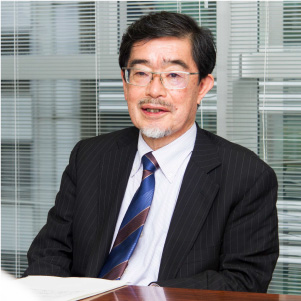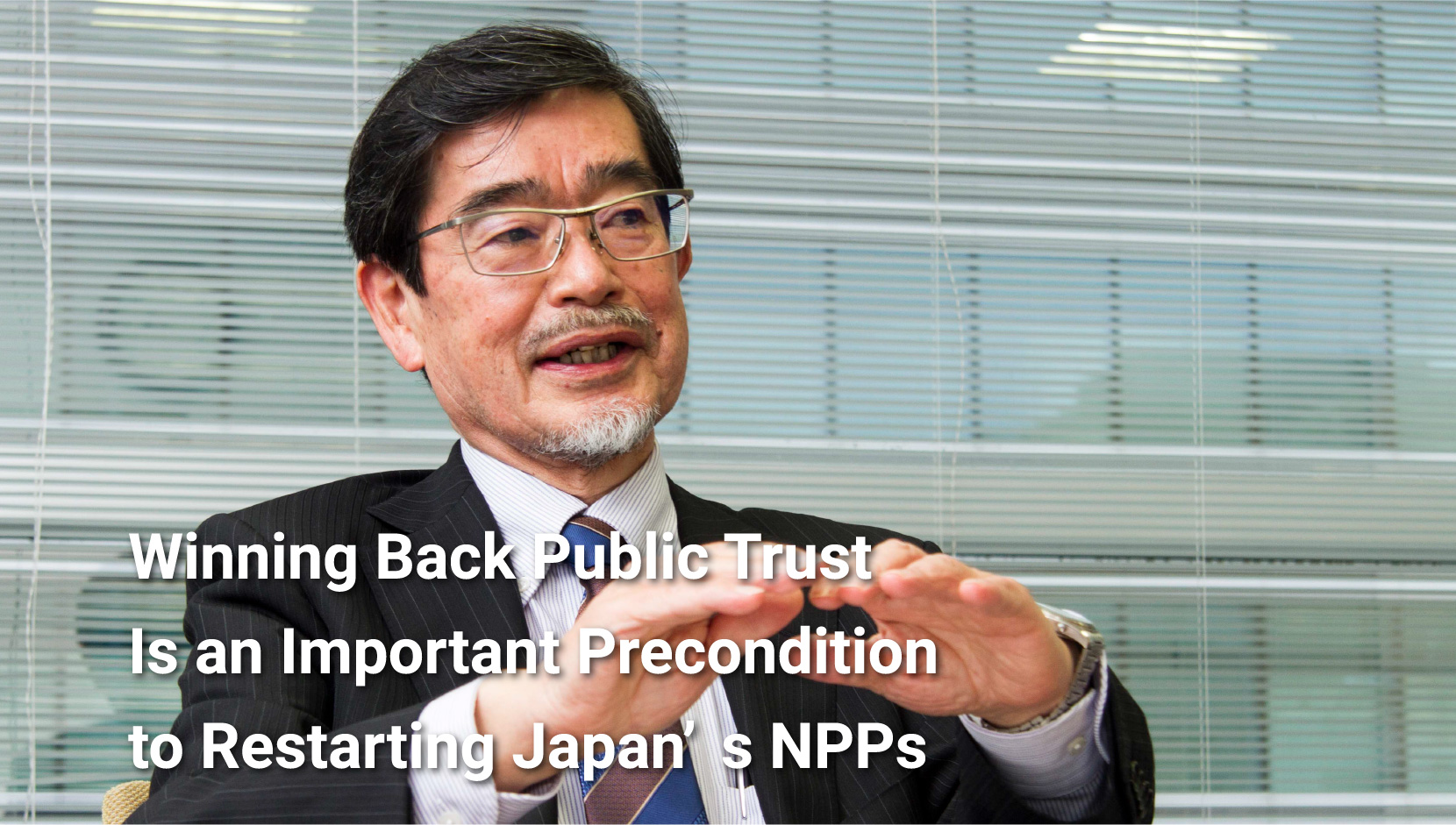Striving to eradicate the negative image of the nuclear accident through the recovery of Fukushima
We asked Professor Emeritus Yamaji about the current situation of nuclear energy in Japan a decade after the Fukushima Daiichi accident of March 2011, as well as about any issues that exist. We also inquired about the future of energy in Japan, including the broad-based introduction of renewable energy. He told us that the trust lost on account of the nuclear accident has yet to be restored, emphasizing his belief in the extreme importance of accomplishing Fukushima’s restoration before public trust is won back. Also, while renewable energies are expected to serve as a major power source in the future, he also displayed a recognition that the most important thing is to win back public trust and promote the restart of existing NPPs, as they will be necessary for the realization of an appropriate energy mix.
– With the accident at the Fukushima Daiichi approaching its tenth anniversary, we would like to hear your thoughts on that milestone.
Yamaji: Although a decade has passed since the accident, I believe that public confidence in nuclear energy [in this country] collapsed and has yet to recover.
In the end, the restoration of such confidence is not so much a problem of safety as it is of peace of mind, I think, and it is impossible to achieve that through the logic of science and technology alone.
I believe that we must properly rethink the philosophy of nuclear energy, as the situation today differs radically from that which existed in the 1950’s and later, an era when people around the world had high hopes for it and its peaceful utilization.
The scientific rationality behind the making or manufacturing of things is important, to be sure. However, human cognitive power goes a little beyond that, as people think about things subjectively and maintain their own worldview. Nuclear energy has to be firmly worked into the worldview that people hold. Right now, though, I think that people perhaps perceive it as something so gigantic that it exists beyond the scope of human imagination and therefore beyond human comprehension.
Atomic energy was originally put into practical use in the form of nuclear weapons. Moreover, unlike conventional weapons, they have such immense power that they put the continued existence of humankind at stake. While there used to be high hopes pinned on the peaceful utilization of atomic energy, the simple fact that it unleashes such massive amounts of energy—exceeding the limits of human imagination—makes many people very nervous about it. Another thing surpassing the bounds of human imagination is the geological disposal of highly radioactive waste (HLW), which involves time spans on the order of 10,000 to 100,000 years,
Once people are confronted with such “scary” things as the accident at the Fukushima Daiichi, they wind up viewing nuclear energy—which transcends human imagination and understanding—as something that is impossible to be handled. In that sense, I think that we need to start over and rebuild the philosophy of nuclear energy.

While I myself believe that the Fukushima Daiichi accident was a disaster of limited scope or dimension, it is also true that nuclear energy conveys to people the image of “catastrophes,” so to speak, including nuclear war. While safety measures had been made in advance for serious accidents and the like at Japan’s NPPs, in the end, the accident that did occur at one of them was unexpected. Even though the Fukushima Daiichi accident was a limited disaster, I think that people, in their hearts, were left with the impression that a catastrophe could not be averted.
To eliminate that impression, it is terribly important, I think, for a solid recovery to be realized in Fukushima. There is also the reality that people lack proper knowledge and awareness of the risks of radiation exposure, so Fukushima recovery efforts will have to be accompanied by solid, reality-based communication about those risks. Though that will take time, I do believe that we need to regain public trust through such efforts.
Maintaining nuclear energy firmly in the total energy mix, while introducing renewable energies that can be industrialized
– The green-growth strategy of the Japanese government, announced last year, cited “50-60 percent” as the estimated ratio of renewable energies to be introduced in the total energy mix by 2050, intending that figure to serve as a point of reference for future deliberations. That level is greater than what had been mentioned in previous discussions.
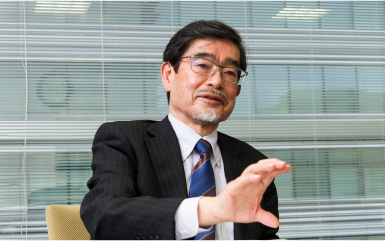
Yamaji: Yamaji: Those deliberations concern what will happen in 2050, so I don’t think it’s such an ambitious number (laughter).
Last year, the Suga administration proclaimed the goal of Japan’s becoming carbon-neutral by 2050, which was the same year mentioned by then-candidate Joe Biden, who later was elected president, as the target for the United States to achieve its own carbon neutrality; Biden had made that declaration while clarifying his emphasis on environmental issues. Another major move was made by China’s President-for-life Xi Jinping, who announced at a meeting of the United Nations General Assembly that his country would become carbon neutral by 2060. Considering such world trends, I think that it was politically correct for the Japanese government to declare a goal of carbon neutrality by 2050. Thinking about Japan’s energy mix predictions for 2050, a heavy reliance on renewable energy cannot be helped, in my opinion, given the current state of NPPs. Even if one includes such power sources as zero-emission thermal energy, it is not particularly surprising, I think, to set the share of renewables in the total mix at 50 or 60 percent. It goes without saying, however, that NPPs need to be maintained as one of the options available. I think that nuclear energy will become more usable in Japan once public trust is regained, but in light of how much trust has been lost over the past decade—a period in which trust was never restored—it will be difficult for nuclear power to reach 30-39 percent [of Japan’s total energy mix] again, where it had been before. For me, personally, I think that a share of around 30-40 percent would be appropriate for NPPs, but if the country is to become carbon neutral—even if nuclear was to regain such a percentage—the remainder would have to be shouldered by renewable energy sources or zero-emission thermal energy. So, that’s why I think a figure of 50-60 percent for renewables in [the energy mix of] 2050 is not such a surprising figure.
Already, the domestic supply of solar power is close to 60,000MW, making it the main source of renewable energy. Also, with the cost of solar panels dropping, even 1-MW plants are now using 1.5-MW panels, meaning that the panels in most power plants are in a state of DC overloading [oversizing DC module capacity to increase generation during non-peak hours and thus optimizing overall performance]. As a result, the capacity factor for some plants in Japan—which had been thought to be around 12 percent under the country’s meteorological conditions—is in fact 18 percent or so, pushing down costs. On the other hand, while Japan used to be the world’s leader in the industrialization of solar energy [panel production, etc.] before 2005 or so, it has since been completely overtaken by China, owing to the stage of volume production having begun. Whereas more than 80 percent of all solar panels in Japan had been made domestically as of 2010, imports, conversely, came to constitute more than 80 percent of the total as of 2019. Japan has thus failed at industrializing [solar energy]; it’s a pity.
The next [kind of renewable energy] drawing attention is offshore wind energy. Not only do turbines need to be made, but equipment must also be installed offshore, so it will be necessary for connections to be made to the power grid via cables laid by ships specially outfitted for installation projects; ports will also have to be built. That means that there is the possibility of offshore wind energy burgeoning into a broad-based industry, possibly matching the scale of the nuclear industry, I believe. If the industrial needs stemming from offshore wind power can be fully sourced domestically, benefits will accrue to the national economy, even if the Japanese population has to shoulder somewhat higher prices. Don’t you think that such a plan ought to be accepted?
Though solar power now overwhelmingly leads other renewables in terms of current generating capacity and cost performance, offshore wind power comes next, considering its potential for growth.
During the past decade, renewable energy has grown by leaps and bounds globally, and has become increasingly mainstream in Japan as well. However, as is well known, both solar and wind power need adjustability, with the necessary adjustments currently handled by thermal power and pumped-storage hydroelectricity. I believe that from now on, adjustments need to be made through decarbonization as well, such as through demand-side efforts and the use of storage batteries.
Then, of course, there is a cheap, non-fossil fuel option for power sources already available: existing NPPs. As they represent a large-scale power source whose safety measures are mostly in place, their full restart, I believe, is the signature issue facing us.
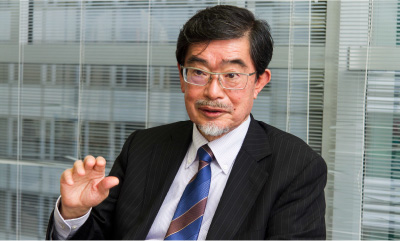
– What are your thoughts about the expectations for energy development in Fukushima Prefecture, focusing on renewables?
Yamaji: I believe that pushing for the development of renewable energy as part of Fukushima’s recovery—which many have pinned their hopes on—is a logical course of action. Although I do not find land conditions in Fukushima to be particularly optimal for renewable energy development, the most important thing, by far, is to bring about the prefecture’s recovery, as stated before. It would be meaningful, I believe, to root related industries in the Hama-dori district as part of a future-oriented recovery effort.

– Viewed worldwide, renewable energies are expected to be introduced broadly, and stable power sources, including NPPs, will play an important role in supporting each country’s energy supply. Please discuss nuclear power’s coexistence with renewables, an issue shared by many countries.

Yamaji: I am convinced that NPPs will continue to serve as a central (main) power source in the future [in Japan]. That is because nuclear power, the output of which can be controlled in a stable fashion with the use of cheap fuel, is a load-responsive baseload power source. To put it differently, if one were to ask which power source offers the most technologically and economically rational supply in response to baseload demand, the answer would be NPPs.
Although nuclear energy will definitely continue to play a role as a central (main) power source, the people of Japan still maintain a lot of anxiety about it, as I mentioned at the outset of this interview. Unless we alleviate that in the future, nuclear energy will fail to fully demonstrate its strengths as a baseload power source on account of the lack of public understanding, no matter how much sense it makes technologically and economically.
Regaining the trust of the Japanese public, to phrase it in extreme terms, entails thinking about what must done for the nuclear industry to survive. Technologically and economically, nuclear technology obviously has value, so the key, I believe, is how to regain that trust, returning to what I stated at the beginning.
During the past decade, safety measures have been implemented over quite a few areas. I think that the most pressing issue before us is to restore public trust in nuclear energy, then to restart existing NPPs and bring them back to speed in the 2020’s. Some treat a forty-year operational lifetime [for NPPs] as if it were established policy, but we need to make sure, at the least, not to include the period that NPPs have been non-operational in that forty-year calculation. We need to be clear in our assertions about identifying what is wrong, calling a spade a spade, so to speak.
Restarting NPPs is the best option for the future
– Japan and countries in the West are seriously tackling environmental problems now. Given those circumstances, what will be the position of Japan’s NPPs moving forward?
Yamaji: I am convinced that NPPs will continue to serve as a central (main) power source in the future [in Japan]. That is because nuclear power, the output of which can be controlled in a stable fashion with the use of cheap fuel, is a load-responsive baseload power source. To put it differently, if one were to ask which power source offers the most technologically and economically rational supply in response to baseload demand, the answer would be NPPs.
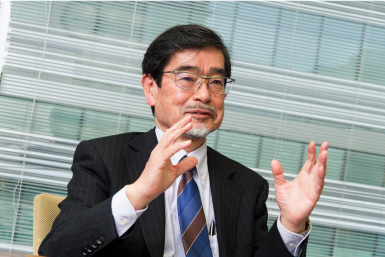
lthough nuclear energy will definitely continue to play a role as a central (main) power source, the people of Japan still maintain a lot of anxiety about it, as I mentioned at the outset of this interview. Unless we alleviate that in the future, nuclear energy will fail to fully demonstrate its strengths as a baseload power source on account of the lack of public understanding, no matter how much sense it makes technologically and economically.
Regaining the trust of the Japanese public, to phrase it in extreme terms, entails thinking about what must done for the nuclear industry to survive. Technologically and economically, nuclear technology obviously has value, so the key, I believe, is how to regain that trust, returning to what I stated at the beginning.
During the past decade, safety measures have been implemented over quite a few areas. I think that the most pressing issue before us is to restore public trust in nuclear energy, then to restart existing NPPs and bring them back to speed in the 2020’s. Some treat a forty-year operational lifetime [for NPPs] as if it were established policy, but we need to make sure, at the least, not to include the period that NPPs have been non-operational in that forty-year calculation. We need to be clear in our assertions about identifying what is wrong, calling a spade a spade, so to speak.
– What should Japan’s nuclear industry be doing to help NPPs play the role expected for them in the future, including building new reactors (such as small modular reactors, or SMRs) and replacing old ones?
Yamaji: Frankly, the current situation—with almost no new orders [coming into the Japanese nuclear industry] either domestically or internationally—was unexpected for me. If human resources are not maintained and industry does not continue, the nuclear industry in general will not survive, so we have reached quite a critical point, I believe.
The issue is how to secure the kind of market that will sustain the industry. While the development of SMRs will allow for the maintenance of a certain level of human resources through R&D, many issues remain in trying to link those efforts quickly to industrialization. The hurdle for that will be relatively low for countries such as the United States and Russia, which have many years behind them developing reactors for shipping vessels—aircraft carriers, submarines, icebreakers, etc.—giving them experience in developing small-scale light water reactors (LWRs) and allowing them to accumulate related technology. How about Japan, though?
In that sense, I think that the major issues that Japan’s nuclear industry must grapple with now are first to win back the trust of the public, and then to restart existing NPPs.
